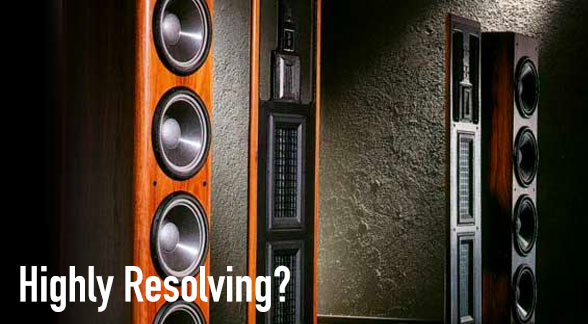Highly Resolving Audio Systems: Required or Not?
It’s an easy and all to common response from high-end audio reviewers and consumer commentators that one needs to assemble an audio system of sufficient quality and expense — “a highly resolving system” — to reap the benefits of high-resolution audio, expensive cables, pricey audio accessories, and esoteric tweaks. I’ve also been told more than once that if my equipment and listening environment possess enough “resolving power” my hearing must be deficient when I’ve been unable to perceive sonic differences between this or that component. In discussing the Upcoming High-Resolution Challenge Part II with readers and other interested parties, an oft mentioned concern is that most participants won’t be able to hear differences between a native high-resolution audio file and a version downconverted to CD specification. The reason? Because their systems aren’t “resolving enough”.
++++++++++++++++++++++++++++++++++++++++++++++++++++++++++++++++
50% OFF Sale Extended For 4 More Days!!

Special 50% Discount for Blog Readers!
I had a great time at the recent AXPONA Show in Chicago chatting with old friends and meeting new AIX Records converts. Sold disc and books. I thought I would offer my loyal readers a special discount on the book. If you want to take advantage of this limited offer, use the coupon code MAAG190601 when you check out. I’ll get your package out right away.
Visit Music and Audio: A User Guide to Better Soundto get your copy today!
++++++++++++++++++++++++++++++++++++++++++++++++++++++++++++++++
But I feel compelled to ask who is the target for “so-called” hi-res audio?Only the well heeled and those fortunate to have a dedicated and properly tuned acoustic listening environment? And what are the requirements for a ‘highly resolving system”? Can a quality turntable spinning a 180-gram vinyl LP be considered “highly resolving” knowing that the actual performance specifications are rather lackluster compared to even the simple and venerable compact disc? Or perhaps the delivered fidelity of a system — the sound as experienced by an experienced listener — is the metric by which audiophile systems should be gauged? Trust what you hear over what you know. What role do specifications, format potential and limitations, and technical measurements play? I don’t think anyone has adequately addressed all of these issues and it’s likely folly to try. But there are absolutes in the recording and reproduction of music and audio. The question is do they really matter?
Audiophile FB groups are full of images of user’s systems and listening spaces. A typical system consists of the obligatory rack with a turntable on top, preamplifier, and other source components stacked on the lower shelves. Wider shots show a pair of speakers to each side and occasionally a large television monitor in the top center. Do the individuals that post these images consider them to be “highly resolving” or are they simply proud to have a nice high end system to enjoy?
And what about us professionals? I don’t go to my studio very often these days but I am confident that it meets or exceeds the standards for “highly resolving”. After all, I mastered albums for over 13 years for artists/clients and produced all 86 AIX Records high-resolution albums in that room. We’ve won awards and garnered positive reviews for the work we’ve done. I worked on the Allman Brothers, Bad Company, SFS, and many, many other records. As for my hearing, I’m a trained listener and have demonstrated repeatedly that I can recognize subtle changes in volume, timbre, and balance. I have a $250,000 professionally designed, built, and tuned room that delivers amazingly accurate sound — and that not including the additional cost of the equipment.
The study that I am planning doesn’t depend on participants having expensive systems, esoteric speakers, and tuned listening spaces. What I really want to determine is whether average audio enthusiasts can perceive differences between high-resolution files natively recorded at 96/24 and versions on ANY reasonable system. I believe that high-fidelity music can and should be appreciated by the masses not just those with money and motivation. To those that think that power cords or isolation pads will influence the “resolving power” of their rigs, there is all the more reason to participate in the study.

